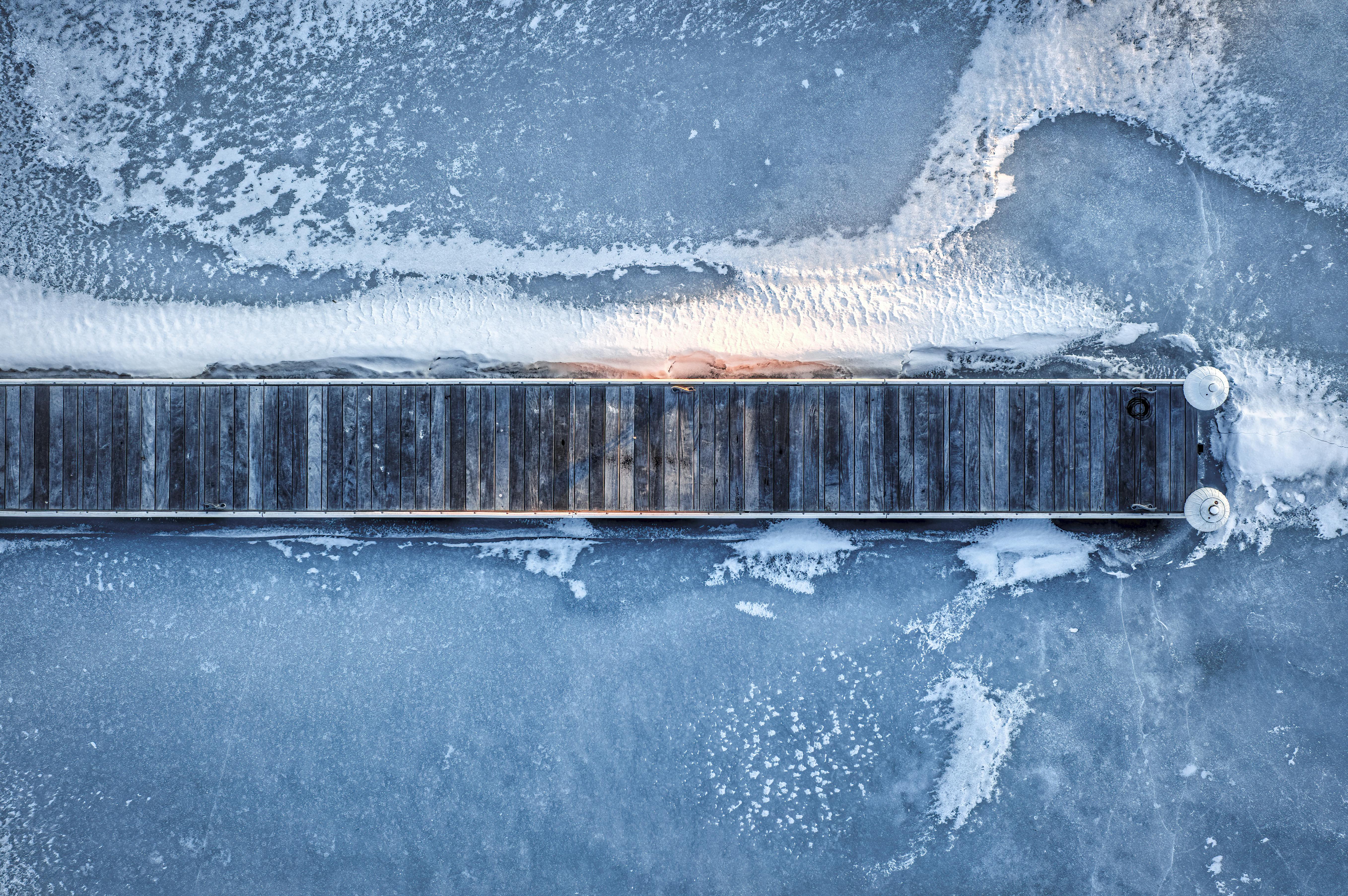Distilling water is an effective and economical way to obtain pure water. It is a simple process that involves boiling water, collecting the steam, and condensing it back into liquid form. Distilled water is free of minerals, contaminants, and other impurities which makes it ideal for a variety of uses. In this guide, we will review the process of distilling water as well as provide tips on how to do it properly.To properly distill water using household items, you will need a large pot with a lid, a smaller pot that fits inside the larger one, and some ice. Place the smaller pot in the center of the larger one and fill the larger pot with water until it is halfway full. Place some ice on top of the small pot. Put the lid on the large pot and turn on the stove to a medium-high heat. The water will begin to boil, and as it does, steam will rise up and condense on the lid due to lower temperatures caused by the ice. As this happens, droplets of pure distilled water will form on the lid and fall into the small pot in the center. Once all of the water has been collected from your large pot, turn off your stove and let it cool before removing your distilled water from its container.
What You Need To Know About Distilling Water
Distilling water is a process of purifying water by removing any chemical or biological contaminants. It is a simple and effective way to make sure the water you drink is safe and healthy. The process involves boiling the water and then collecting its vapor, which will be condensed into clean, pure distilled water. The contaminants are left behind in the boiling pot. Distilled water is used for many different purposes, including drinking, medical needs, and industrial applications.
In order to distill water, you will need a pot or kettle with a lid, some kind of heat source (propane stove or electric burner), and a collection container (like a glass jar). Fill the pot with tap water and put it on your heat source. Once it starts to boil, lower the flame so that it maintains a steady boil while still producing steam. Place the lid on top of the pot so that the steam condenses on it and drips into your collection container. Once all of the steam has been collected, turn off the heat source and allow your distilled water to cool before use.
When distilling water at
Boiling and Condensing Water to Create Distilled Water
Distilled water is created by boiling and condensing water. This type of water is free from minerals, salts, and other impurities. The process of boiling and condensing creates a pure form of water that is safe for consumption. It is used in many industries, including medical, food processing, cosmetics, pharmaceuticals, and more.
The process of distilling water begins with boiling the liquid. This causes the contaminants in the water to be separated from the pure H2O molecules. As the liquid boils, steam rises from it which contains the now-purified molecules. The steam then condenses back into liquid form as it cools down. The condensed liquid has been purified through this process and can now be used for various applications.
This method of purifying water is very efficient and cost-effective since it requires minimal energy input compared to other methods such as filtration or reverse osmosis systems. It also eliminates the need for additional chemicals or substances to remove contaminants from the liquid.
Distillation can also be used to create distilled alcohol which has a very high concentration of ethanol
Distilling Water
Water distillation is a process that removes contaminants and impurities from water by boiling it and condensing the steam back into liquid form. The process of distilling water involves heating it to its boiling point, then capturing the steam as it evaporates and condensing it back into liquid form. The resulting water is free of impurities and safe to drink. Distilled water has many uses, including drinking, cooking, medical applications, aquariums, and industrial processes.
The best way to distill water is by using a home water distiller. These are relatively inexpensive and easy to use. They work by heating the water in a chamber to its boiling point, collecting the steam as it evaporates, then passing the steam through a condenser which cools it back into liquid form. The result is pure, contaminant-free distilled water. Home water distillers are ideal for small scale use such as individual households or small businesses.
Another option is reverse osmosis (RO). RO systems use pressure to force the contaminated water through a membrane that removes impurities from the liquid. This method requires less energy than distillation but produces slightly
Advantages of Drinking Distilled Water
Distilled water is a type of water that is free from contaminants, minerals, and other impurities. It is created by boiling water and condensing the steam into a clean container. There are several benefits to drinking distilled water, including improved hydration, fewer toxins in the body, and better tasting beverages.
One of the primary advantages of drinking distilled water is improved hydration. Because it contains no minerals or other contaminants, it can be quickly absorbed into the body and used for hydration. The lack of these impurities also means that it won’t leave behind any residue after being consumed. This makes it an ideal choice for people who are looking to stay properly hydrated throughout the day.
Another benefit of drinking distilled water is that it eliminates toxins from the body. As previously mentioned, there are no minerals or contaminants in distilled water, so when consumed it helps to flush out any unwanted substances in the body. This helps to keep a person’s internal organs running smoothly and ensures that they remain free from disease-causing agents.

Setting Up A Home Distillation System
Distilling alcohol at home can be a fun and rewarding experience, but it is important to do it safely and responsibly. Before attempting to set up a home distillation system, it is important to understand the legal implications of distilling alcohol at home. In most countries, it is illegal to distill alcohol without a license. It is also important to understand the different components of a distilling system and how they work together.
The first step in setting up your home distillation system is selecting an appropriate still. There are several types of stills available, including pot stills, column stills, and hybrid stills. Each type has its own advantages and disadvantages, so it is important to research each type thoroughly before making a purchase.
Once you have selected your still, you will need to purchase all of the necessary supplies for your setup. This includes things like tubing, thermometers, collection containers, hoses, and other accessories. It is important to ensure that all components are compatible with each other and that you have enough materials for your setup.
How Does A Home Water Distiller Work?
A home water distiller is a machine that removes contaminants from water by heating the water to its boiling point, and then capturing the steam as it condenses back into liquid form. Distillation is one of the most effective ways to purify drinking water, since it removes impurities from the source water and leaves behind clean, drinkable water. The process begins with placing the contaminated water in the distiller, which is then heated to its boiling point. As the heated water turns into steam, it rises through a tube in the distiller and is captured as it condenses back into liquid form. The condensed steam then passes through a cooling chamber where it cools off and returns to its liquid state. The resulting purified drinking water can be collected in a separate container for use.
Distillation can remove a range of contaminants from drinking water, including heavy metals, bacteria, viruses, chlorine, fluoride, salt, and other dissolved solids. It also removes any unpleasant tastes or odors that may be present in the source water. Home water distillers are an ideal choice for those who are looking for an economical
Contaminants Removed During The Distillation Process
The distillation process is a common method of separating and removing contaminants from liquids. It is used to separate substances with different boiling points, and it involves heating a liquid until it boils and then collecting the vapors that are produced. This vapor is then condensed back into a liquid form, resulting in a purer end product. Distillation can be used to remove water, salt, acids, bases, organic compounds, and other impurities from liquids such as oil, gasoline, and alcohol. It is also an effective way of purifying water for drinking by removing bacteria and other contaminants. The distillation process can be done either manually or with automated equipment depending on the complexity of the operation.
The distillation process works by first heating the liquid until it begins to boil. As the liquid temperature increases, different components within the mixture will begin to evaporate at different temperatures. This is due to their differing boiling points based on their molecular structure. As these vapors rise in temperature they begin to separate from each other allowing for collection and separation of the individual components. These separated components can then be collected separately or recombined in

Conclusion
Distilling water is a simple process that can be easily done at home. It is an effective way to purify your water and remove unwanted contaminants. The most important thing to remember is to make sure all of the equipment used in the process is clean and free from any contaminants. Additionally, it is important to use a food grade container for the distillation process as this will ensure that no toxins or bacteria are present in the resulting distilled water.
Finally, properly distilling your water will help you achieve clean and safe drinking water. It will also help protect you from any potential health problems that could arise from consuming contaminated water. Taking these steps can help you ensure that your drinking water is safe for consumption.

